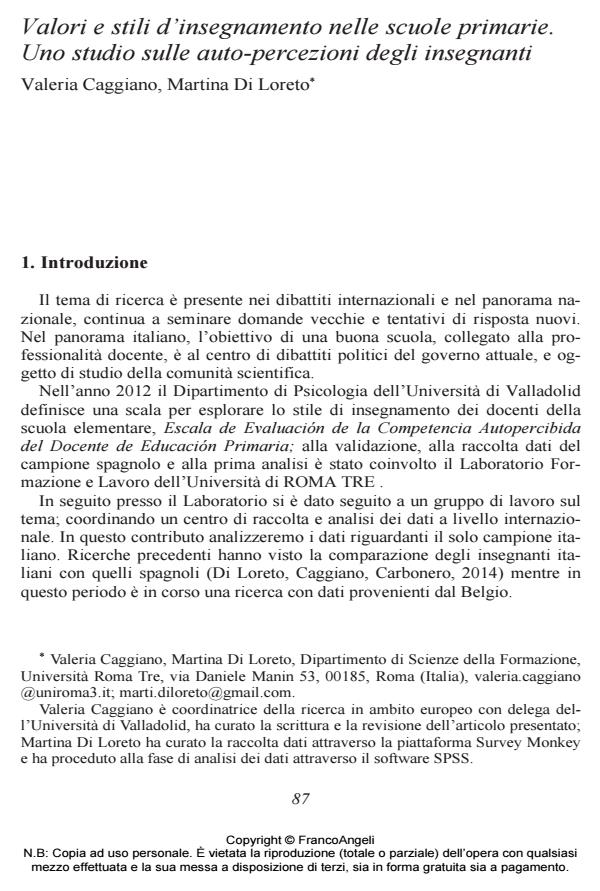Values and teaching styles in primary schools. A study on teachers’ self-perceptions
Journal title CADMO
Author/s Valeria Caggiano, Martina Di Loreto
Publishing Year 2015 Issue 2015/1
Language Italian Pages 19 P. 87-105 File size 83 KB
DOI 10.3280/CAD2015-001008
DOI is like a bar code for intellectual property: to have more infomation
click here
Below, you can see the article first page
If you want to buy this article in PDF format, you can do it, following the instructions to buy download credits

FrancoAngeli is member of Publishers International Linking Association, Inc (PILA), a not-for-profit association which run the CrossRef service enabling links to and from online scholarly content.
This contribution is aimed to be a conceptual proposal within the discussion on the teachers’ assessment and also intends to make a contribution in the explanation of the variables affecting and characterizing the primary school teachers’ teaching styles. The study fits within the international debate on this topic and more in specific on the tools used for the assessment, and returns the interest on Values as psychological dimension characterizing the teaching styles and the teachers’ self-assessed skills. The use of the spanish scale "Escala de Evaluación de la Competencia Autopercibida del Docente de Educación Primaria" (ECAD-EP), together with the Schwartz PVQ scale (Portrait Values Questionnaire) involved a sample of 203 primary school teachers. According to the results, the values whom primarily affect the development of these skills and professional behaviors are: tradition, universalism, benevolence and selfdirection. The first two affect more significantly and on a higher number skills, while the rest have more specific and targeted influences. Further studies will show in depth the socio-demographic variables impact on the teaching styles, contributing to the international literature about these issues.
Keywords: Teaching styles, teachers’ evaluation, teachers’ self-perceived teaching competences, instructional variables, values.
- Liderazgo educativo en centros de secundaria. Relación con la percepción y la satisfacción laboral del profesorado Raquel de la Fuente-Anuncibay, Jerónimo González-Bernal, Raúl de Diego-Vallejo, Valeria Caggiano, in CADMO 2/2018 pp.51
DOI: 10.3280/CAD2017-002006 - Burnout and Self-Perceived Instructional Competence: An Exploratory Study of a Group of Italian Female Elementary School Teachers Monica Pellerone, Venerando Rapisarda, Maria Chiara Antonietta Trischitta, Ermanno Vitale, Tiziana Ramaci, in International Journal of Environmental Research and Public Health /2020 pp.1356
DOI: 10.3390/ijerph17041356
Valeria Caggiano, Martina Di Loreto, Valori e stili d’insegnamento nelle scuole primarie. Uno studio sulle auto-percezioni degli insegnanti in "CADMO" 1/2015, pp 87-105, DOI: 10.3280/CAD2015-001008